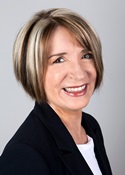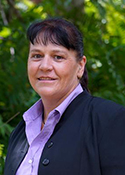Wide Bay
Margin: Liberal National 13.2%
Region: Central Coastal, Queensland
In a nutshell: Long a safe seat for the conservatives, Wide Bay is to be vacated at the coming election with the retirement of former Nationals leader Warren Truss.
Candidates in ballot paper order

|
JANNEAN DEAN ELISE ANNE COTTAM LUCY STANTON LLEW O’BRIEN BRON MARSH BRUCE MAYER BARRY COOK |
The electorate of Wide Bay has been held by the National/Country Party since 1974, and is to be vacated after 26 years by its former leader, Warren Truss. It was created at federation, and has since covered a variable area around Maryborough, 300 kilometres north of Brisbane. Maryborough is currently at the northern end of an electorate that extends south along the coast to Noosa, and inland through Gympie to Murgon and Cherbourg. The electorate ranks second lowest in the country for median income and fifth highest for median age, and also rates low for educational attainment and non-English speakers.
Now a securely conservative seat, Wide Bay was one of 15 seats across the country won by Labor at the first election in 1901. It was held until 1915 by Andrew Fisher, who served three terms as prime minister and won the party’s first parliamentary majority in 1910. Labor was narrowly defeated at a by-election held after Fisher retired due to ill health, and for the next 13 years the seat was held by Edward Corser, first as a Liberal and then in the Nationalist Party that succeeded it in 1917. The seat passed to the Country Party upon Corser’s death in 1928, when his son Bernard Corser was elected as the party’s candidate without opposition.
Labor gained the seat for the first time in nearly half a century with Brendan Hansen’s win in 1961, and he retained it until his defeat when Queensland swung against the Whitlam government in 1974. It was then held for the National/Country Party by Clarrie Millar until 1990, and by Warren Truss thereafter. The general trend over time has been for increasing Nationals margins, with Truss retaining the seat by 8.5% amid Labor’s strong statewide result in 2007 and boosting his margin to 15.6% in 2010, before a narrowing to 13.2% in 2013.
Warren Truss worked his way to cabinet rank in 1999, and then to the Nationals’ deputy leadership in July 2005. He progressed to the leadership when Mark Vaile resigned in the wake of the 2007 election defeat, although it was often noted that his profile was a good deal lower than that of his eventual successor, Barnaby Joyce, who moved from a Queensland Senate seat to the New South Wales lower house seat of New England in 2013. Truss announced his impending retirement in February 2016 and stood aside from cabinet and the leadership, to which Joyce was duly elected unopposed.
The Liberal National Party preselection to replace Truss was won by Llew O’Brien, a police officer, ahead of Damien Massingham, chief executive of Tourism Noosa, and Tim Langmead, director of external relations at Fortescue Metals. O’Brien had been endorsed by Truss and reportedly won on the first round, despite a finding from 2014 that he had inappropriately accessed police information on two LNP preselection candidates (although no adverse finding was made). Massingham had backing from Attorney-General George Brandis, while Langmead boasted endorsement from a Western Australian contingent including Matthias Cormann and his boss, Andrew Forrest. Former state Opposition Leader Jeff Seeney initially declared his interest in the seat, but ultimately decided not to run.
Analysis by William Bowe. Read William’s blog, The Poll Bludger.


